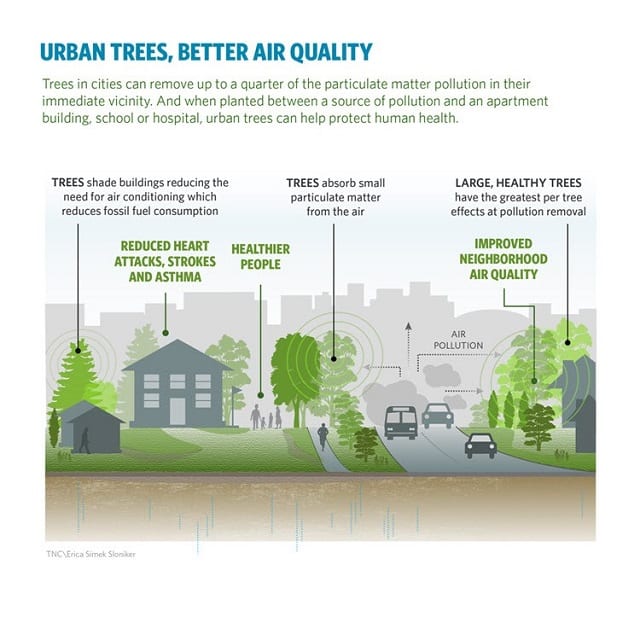A study by the National Parks Service found that urban forest tree canopy in 11 study parks removed 1.1 million metric tonnes of air pollutants every year.
A critical co-benefit of the urban forests to be implemented for this project would be carbon sequestration, as well as the removal of air pollutants. Since trees absorb carbon dioxide from the atmosphere, they provide a particularly important service in urban settings where CO₂ emissions are especially high and often remain congested within the city. Even further, trees absorb and sequester other pollutants in the air, primarily through the stomata of their leaves. Key pollutants such as SO₂, NO₂, PM2.5, and CO, among other gaseous pollutants, are absorbed in large quantities by urban forests. Another study from a researcher at the University of Arizona found that native species are particularly effective for combating air pollution in any given setting.
